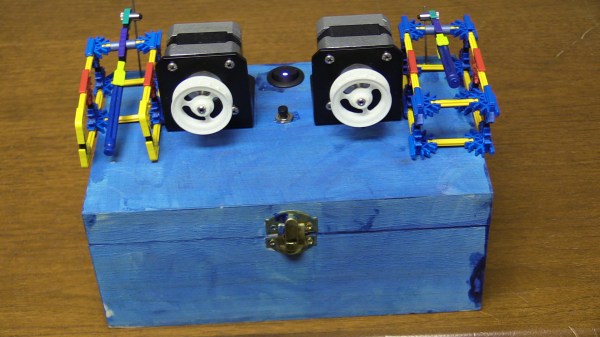Inspired by the floppy drive orchestras of others, [Jeremy] has built a Pi-driven MIDI music box with stepper motor resonators and outlined the build on hackaday.io.
Control for the motors comes from an Iteaduino Mega 2560. The music starts as a MIDI file, gets processed into a text file, and is played over serial by a Raspberry Pi. He’s added percussion using K’NEX instruments and 9g servos, which we think is a nice touch. It can be powered via LiPo or from the wall, and [Jeremy] baked in protection against blowing up the battery. As he explains in the tour video after the break, the box is clamped to a wooden table to provide richer sound.
[Jeremy]’s favorite part of the build was enclosing the thing as it was his first time using panel-mount components. Stick around to see a walk-through of the guts and a second video demonstrating its musical prowess.
Continue reading “Sweet Stepper Of [Jeremy]’s Rocks Out With Its Box Out”















